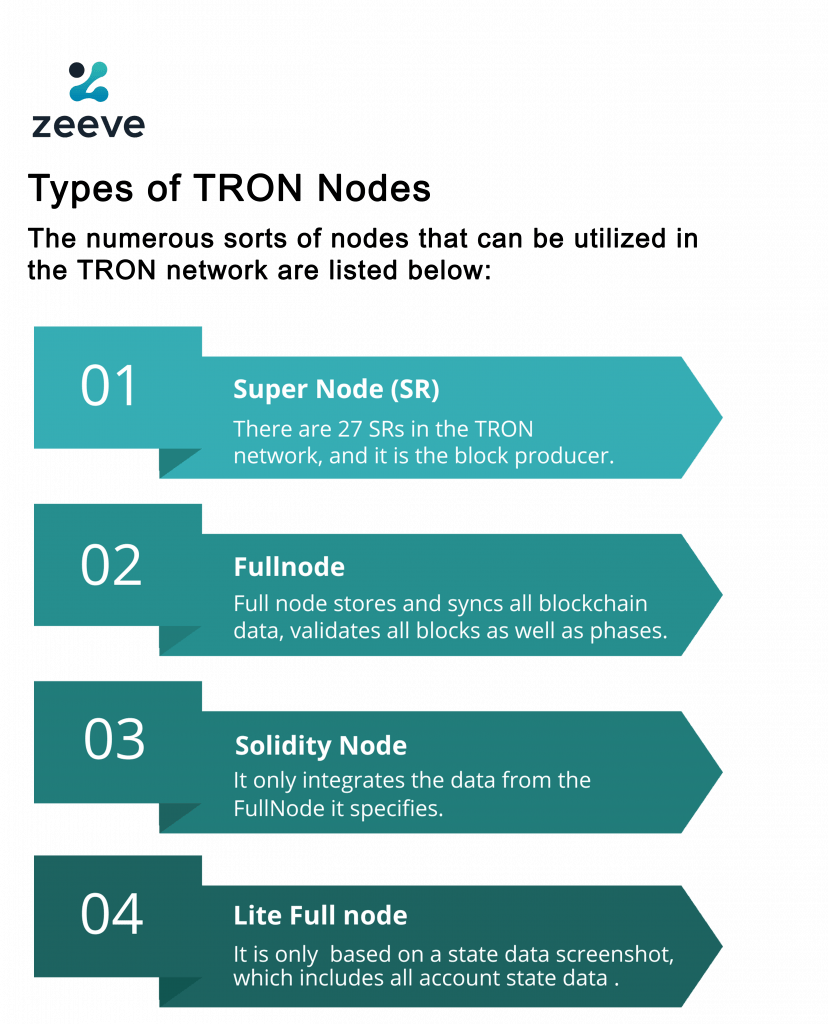Ever wondered of directly transferring your content to the viewers without getting it stored with any third party? Or Getting good pay for the content you create? Or possibly even have the full authority over the content you create? Probably TRON might help us to answer these questions.
The reason behind TRON’s invention?
The main aim behind the TRON invention is to provide the content creators with more rewards for their hard work. The media industry has been formed in such a way that a few large companies determine the media content to be viewed and published on their websites. Due to this, they gain most of the money through media generators. However, the revenue distribution gets reduced to the creators. TRON mainly uses the “Decentralize the Web” philosophy. Thus, TRON was created.
What is TRON TRX used for? It is used to eliminate the ‘mediator’ i.e., the middle person, and can use TRX tokens to reward content creators directly over the TRON network. As a result, the author owns the media entirely, rather than a giant corporation owning a portion of it. They can provide content straight to the viewers and be paid for it by using the TRON protocol. This is Tron’s vision, a streamlined entertainment business made possible by decentralized blockchain technology. There are various products involved in the TRON ecosystem such as decentralized apps dApps, Client Wallets etc.
TRON technology
TRON is a blockchain network that is powered by TRON Foundation-developed software. Because it contains smart contracts, it allows other currencies and products to be built on top of it, in addition to having its cryptocurrencies in the form of the TRX token. TRON is a decentralized computer network that runs software (referred to as nodes) that analyses blocks and transaction records.
What are Nodes? Nodes can be referred to as the backbone of blockchain technology and these nodes are used to run a piece of client software. Every active device on the network can be called a node. A client is a TRON protocol implementation that checks all transactions in each block, ensuring the network’s security and data accuracy.
Types of TRON Nodes
The numerous sorts of nodes that can be utilized in the TRON network are listed below:
- Super Node (SR): There are 27 SRs in the TRON network, and it is the block producer. The process follows verifying the transactions, writing them into the blocks, and making blocks in turn. Each node of the TRON network has access to the information of the Super Representatives. transcan is the greatest method to browse.
- Fullnode: Full node stores and syncs all blockchain data, validates all blocks as well as phases, and enables external inquiry via HTTP API and Grpc API.
- Solidity Node: It only integrates the data from the FullNode it specifies, and also provides an API service.
- Lite Full node: The sole difference between Lite FullNode and FullNode is that Lite FullNode only starts based on a state data screenshot, which only includes all account state data and historical data from the previous 256 blocks. While the node is operational, only data about the current data snapshot is retained; history data of blocks and transactions are not saved. As a result, Lite Fullnode offers the advantages of taking up less disc space and booting up quickly, but it lacks historical block and transaction data inquiries and only supports a portion of fullnode’s HTTP and GRPC APIs. Please see HTTP, and GRPC for APIs that Lite Fullnode does not support.

TRON Network Architecture
TRON’s network is structured as a peer-to-peer (P2P) network, with all nodes having the same status. SuperNode, FullNode, and SolidityNode are the three sorts of nodes. SolidityNode synchronizes only the solidified blocks, FullNode synchronizes both blocks and broadcasts transactions, whereas SuperNode generates the blocks. Any device that deploys the java-tron program code can join the TRON network as a node.
TRON network has an abstract modularization design. As a result of this design, the system may be divided into various fundamental modules, including the transaction actuator, underlying network, consensus, data storage, TVM, and application layer interface.
- Underlying Network:
The underlying network module is a combination of efficient message response and flexible systems which is built on a high-performance network framework. In the underlying network module, node communication and node discovery are two separate modules.
In order to implement the Node discovery, we can use the Kademlia algorithm. This algorithm helps to satisfy the criteria for node discovery in decentralized network setups. The node communication module uses TCP as its data transport protocol. On the business layer, a modular and extensible message registration response mechanism is created based on this.
- Data Storage:
We created a data storage module that supports fast rollback as well as the KhaosDB in-memory database for quick blockchain switching. These indicate the ultimate goal of the TRON public chain’s performance. It facilitates switching data engines between LevelDB and RocksDB, as well as custom data engine construction; all that is required is the implementation of the proper interface set.
- Consensus:
The consensus method on the TRON public chain is currently DPOS, which allows for a maximum of 2000 TPS.
Blocks are classed as solidified or unsolidified to optimize the public chain’s performance. It can help to overcome the limitations of the CAP theory of distributed systems by prioritizing data availability and consistency. Rolling back solidified blocks is impossible. The newest transaction data is stored in unsolidified blocks.
- On-chain governance & incentive mechanism:
As a result of the decentralized election, the TRON public chain now has two types of roles: Super Representative (SR) and Super Representative Partner (SRP), both of which are involved in on-chain governance. Voting for individual proposals can be initiated by an SR/ SRP, and other SRs/ SRPs can vote on the proposals, ensuring that blockchain governance is completely decentralized.
In order to achieve self-sufficiency, the TRON public chain has a precise and efficient incentive structure. SRs have the ability to bundle transactions, produce blocks, and obtain incentives for block generation
Advantages of TRON
- Rapid Transactions: The transactions that take place on the TRON (TRX) blockchain network are extremely fast. The network claims that the transactions are processed up to 2000 transactions per second (TPS). However, this helps us to scale the overall network and has future potential for pushing it to mainstream adoption, while compared with other blockchain networks such as Ethereum and Bitcoin.
- About the ability to create dApps: To design decentralized apps (dApps), smart contract functionality is enabled by the TRON blockchain network. From decentralized finance (DeFi) to NFT marketplaces, these can be designed to fulfill a range of diverse use-cases. Developers are also encouraged to build on edge of the network.
- High Level of Token Utility: Within the digital ecosystem TRX can be used as a mode of exchange which will help users who use TRX as an ideal tool for international traders. As the ecosystem of dApps is evolving, Tron can utilize its technology to create different use-cases, and then the value of the token increases in parallel.
TRON Node Deployment
Prerequisites for SuperNode Deployment:
Minimum: RAM: 32G, Bandwidth: 100M, CPU: 16 cores, Disk: 1T
Recommended: RAM: > 64G, Bandwidth: > 500M, CPU: > 64 cores, Disk: > 20T
SuperNode Deployment
- Download the configuration file, private_net_config.conf
wget https://raw.githubusercontent.com/tronprotocol/tron-deployment/master/private_net_config.conf
- Provide the private key to the local witness.
- Provide private key’s corresponding address = genesis.block.witnesses
- Provide p2p.version equals to any positive integer other than 11111
- Provide the first SR needSyncCheck = false, and others to True
- Provide node.discovery.enable = true
- And then run the below script
nohup java -Xmx6g -XX:+HeapDumpOnOutOfMemoryError -jar FullNode.jar –witness -c private_net_config.conf
command line parameters introduction:
–witness: start witness function. For SuperNode, this parameter is required, i.e.: –witness
–log-config: specify the log configuration file path, i.e.: –log-config logback.xml
-c: specify the configuration file path, i.e.: -c config.conf
Pre-requisites for FullNode Deployment:
Minimum: RAM: 32G, Bandwidth: 100M, CPU: 16 cores, Disk: 1T
Recommended: RAM: > 64G, Bandwidth: > 500M, CPU: > 64 cores, Disk: > 20T
FullNode Deployment
- Download the configuration file, private_net_config.conf
wget https://raw.githubusercontent.com/tronprotocol/tron-deployment/master/private_net_config.conf
2. Provide the seed.node ip.list with SR’s ip and port
- Provide p2p.version the same as SuperNode’s p2p.version
- Provide genesis. block the same as genesis.block
- Next, needSyncCheck = true
- Next, node.discovery.enable = true
- And then run the below script
nohup java -Xmx6g -XX:+HeapDumpOnOutOfMemoryError -jar FullNode.jar -c private_net_config.conf
command lines parameters
–log-config: specify the log configuration file path, i.e.: –log-config logback.xml
-c: specify the configuration file path, i.e.: -c config.conf
Zeeve for TRON node deployment:
In the near future, as we are heading towards the concept of “decentralizing the web” it will become very tricky to understand the concepts and manage them. However, being aware about the advancement and importance of the Tron Node and its deployment utilizing it as soon as possible becomes a core point. Zeeve, a Blockchain as a Service (BaaS) platform that enables emerging startups and enterprises build, launch, and maintain secure decentralized Apps, can be utilized for TRON Node deployment. The BaaS acts as a catalyst that is responsible for global adoption of blockchain technology. It was created to be cloud-agnostic, allowing it to connect to other networks that use various technologies, such as Ethereum. Zeeve is a company that helps businesses and entrepreneurs create, launch, and manage secure decentralized applications. Zeeve provides its best possible service to benefit businesses by providing security, transparency, and efficiency of blockchain services along with infrastructure management.






















